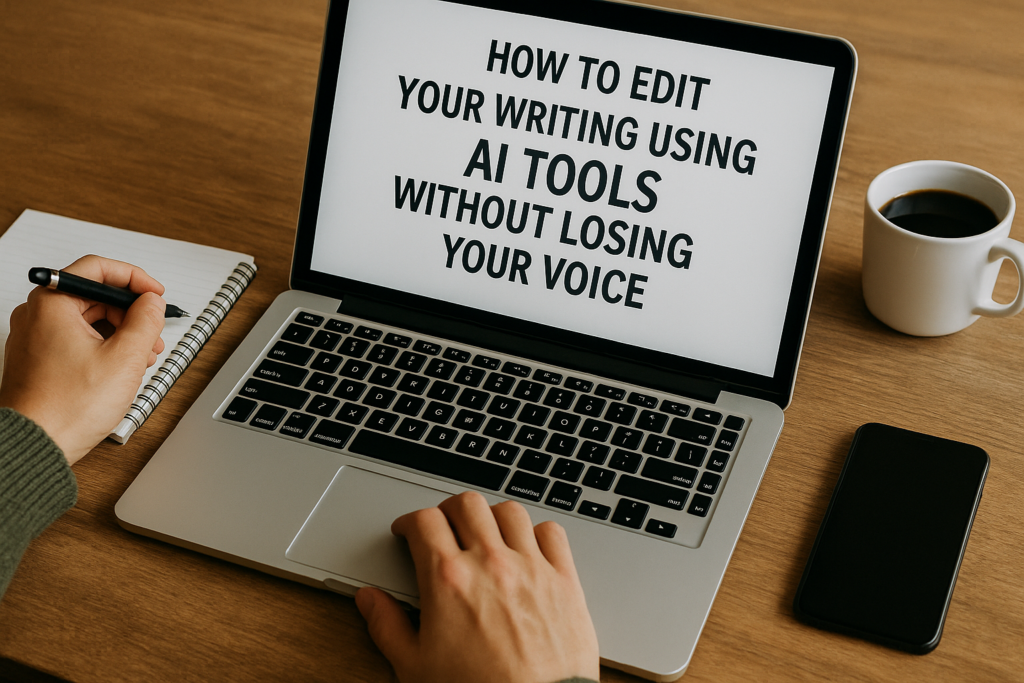Writing a first draft is always easy. Editing is where your actual work starts. This is the stage where words take shape, ideas get sharper and mistakes disappear. But editing is also a slow and tiring process.
This is where AI tools step in. If you use them wisely – they can make your process faster without driving out your style. Let is walk through a step-by-step workflow that can help turn your rough draft into clean writing.

Table of Contents
Step 1: Read Before You Edit
Always start by reading your draft once. Do not fix anything just yet. You must notice what is confusing or stiff.
When you step back and read like a stranger – you will see what needs the most work. Some lines will need a better flow. Others may sound repetitive. This first read will give you direction for what to do next.
Step 2: Rewrite Using a Paraphrasing Tool
Once you know which parts are not working for you – open a paraphrasing tool. It will help you rewrite sentences that do not read right.
You should paste one paragraph at a time. Now, see how the tool rewords your text. Then read it out loud. If it sounds natural – keep it. If it feels forced – change it yourself.
You must think of the paraphrasing tool as a helper – not a ghostwriter. It will give you ideas for phrasing but the final touch should always come from you. This is how the text keeps your voice.
Step 3: Cut the Extra With a Summarizer
When writing, it is normal to say the same thing twice. A summarizer will help you clean that up. It shows what is essential and what is filler.
If a section feels too much, you can run it through the tool. You’ll get a shorter version that keeps the main point. Then go back and see what you can remove or rewrite in your draft.
A summarizer also helps during research. When reading long articles, paste the text and get a short overview. It will save your time and keep your focus clear before you start writing.
Step 4: Clean Up With a Grammar Checker
Now that your sentences are shorter and sharper – it is time for you to polish. Use a grammar checker to catch small slips. Typos, wrong tenses, missing words – these tiny errors can you’re your readers out of the flow.
The tool will highlight mistakes and explain what’s wrong. But don’t accept every fix. Some suggestions sound too formal or stiff. Read everything before you change it. Keep what sounds natural and simple.
A grammar checker is like your second set of eyes. It does not change what you mean – it just helps you write smoothly.
Step 5: Check Authenticity With an AI Detector
Once your piece feels ready, run it through an AI detector. This shows how human your writing sounds.
If you have used AI tools to paraphrase or summarize – sometimes the text can come across too clean or predictable. An AI detector will help you spot that. It helps you see if your writing feels flat.
If the score looks low or too machine-like, go back and make small edits. Shorten long sentences. Use more natural phrasing. Add a few small pauses or transitions. That small effort brings your voice back.
Step 6: Read Again Before Finalizing
After using all the tools, take a break. Then read your work once more. Reading after a short pause will help you see things clearly.
Ask yourself: Does this content sound like me? Does it flow easily? If a line feels heavy, rewrite it by hand. Don’t rely on any tool at this stage. This is where your instincts matter most.
If you’re writing for a blog or an article with a limit, check the length using a simple word counter. It helps you stay close to the right size without cutting important points.
Step 7: Add Your Final Touch
Every tool can fix grammar or phrasing. But only a person can add feeling. Read your ending once more. Does it make sense? Does it leave something for readers to think about?
Editing with AI tools is like working with assistants. They help with the heavy lifting. But they do not know your story or your intent. This is what you bring to the table.
Final Thoughts
Editing used to take hours. Now it takes less time – if you use the right tools the right way. A paraphrasing tool helps with rephrasing. A summarizer cuts the clutter. A grammar checker fixes mistakes. An AI detector checks if your writing sounds real.
But the secret isn’t in the tools. It’s in how you use them. Don’t hand over control. Use AI to support your process, then step in to give it heart.
Good writing doesn’t need to sound perfect. It needs to sound alive. And that’s something no machine can fully copy.


